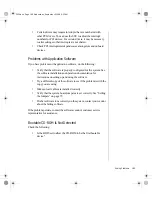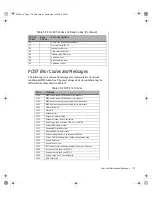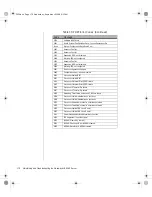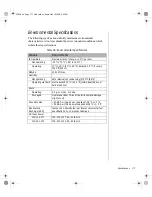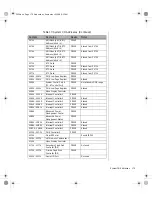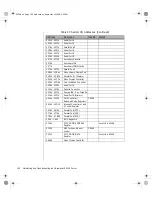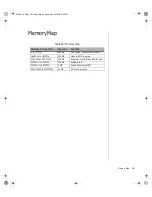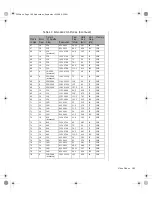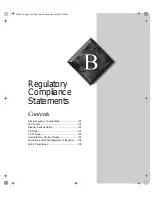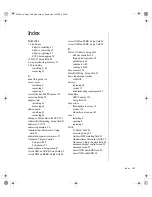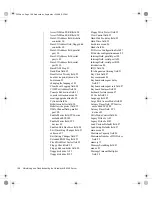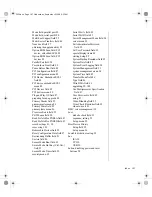
182 Maintaining and Troubleshooting the Gateway ALR 9200 Server
Interrupts
Table 39 suggests a logical interrupt mapping of interrupt sources; it
reflects a typical configuration, but you can change these interrupts. Use
the information to determine how to program each interrupt. The actual
interrupt map is defined using configuration registers in the PIIX4E and the
I/O controller. I/O Redirection Registers in the I/O APIC are provided for
each interrupt signal; the signals define hardware interrupt signal
characteristics for APIC messages sent to local APIC(s).
Table 39: Interrupts
Interrupt
I/O APIC
Level
Description
INTR
INT0
Processor interrupt
NMI
N/A
NMI from PIC to processor
IRQ1
INT1
Keyboard interrupt
Cascade
INT2
Interrupt signal from second 8259 in PIIX4E
IRQ3
INT3
Serial port A or B interrupt from SIO device (you can configure
either)
IRQ4
INT4
Serial port A or B interrupt from SIO device (you can configure
either)
IRQ5
INT5
Parallel port II
IRQ6
INT6
Diskette port
IRQ7
INT7
Parallel port
IRQ8_L
INT8
RTC interrupt
IRQ9
INT9
Signal control interrupt (SCI) used by ACPI-compliant
operating system
IRQ10
INT10
IRQ11
INT11
IRQ12
INT12
Mouse interrupt
IRQ13
INT13
Co-processor interrupt
IRQ14
INT14
Compatibility IDE interrupt from primary channel IDE devices
0 and 1
IRQ15
INT15
SMI_L
System management interrupt—general purpose indicator
sourced by the PIIX4E and BMC through the PID to the
processors
Note:
If you disable either IDE
controller to free the
interrupt for that controller,
you must physically unplug
the IDE cable from the
system board. Simply
disabling the drive by
configuring the SSU option
does not make the interrupt
available.
3424.boo Page 182 Wednesday, September 2, 1998 9:23 AM


